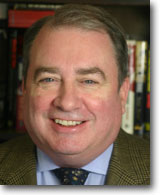Tag
California Center for Health Care Reporting
-
•
Overcoming cautious officials to tell stories of mental illness
Many of you will already be familiar with “Mental Breakdown,” the CHCF Center for Health Reporting and Modesto Bee joint…

-
•
Calif. program of bundled dental care for children gets a checkup
About 18 years ago, California implemented a program of “geographic managed care” for children’s dental coverage in Sacramento. Now, in…

-
•
Calif. organization names AHCJ members to staff
The new California HealthCare Foundation’s Center for Health Reporting has announced its editorial staff. The Center, a grant-funded organization led…

-
•
Calif. foundation backs new model; will be hiring
The board of directors of the California HealthCare Foundation met over the weekend and approved funding to create the California…


